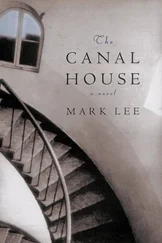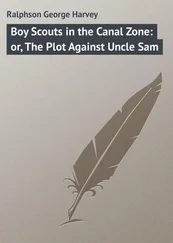So I stood there, outside her flat, the two plane trees and the old print works behind me. I could have been there for hours, it didn’t bother me. I wasn’t interested in time, I was interested in her. I was interested in getting to her. But I couldn’t. I couldn’t get to her. I didn’t know how to. Walking up to her door and simply knocking on it until she appeared wouldn’t have been enough. It wouldn’t have been enough.
De Beauvoir Road was quiet, except for the distant furore of a group of lads walking down Englefield Road, up ahead in the direction of Kingsland Road. It was a comforting racket, it made me feel warm and happy. I couldn’t recall the last time I had walked drunkenly down the street with a group of friends, arm in arm, staggering, singing, and happy. I looked off to where De Beauvoir Road joined up with Englefield Road, by the small roundabout, as the group of lads were passing. I could see there were six of them in total. Two of them were wearing Arsenal Football Club shirts — they must have been warmed by the booze, as it was quite cold to be wearing just a football shirt. They must have been to the match, I figured. I had lost track of the time. I suddenly realised that before I started walking to the canal I would have known whom Arsenal would have been playing, because I was interested in things like that back then. Things like football matches back then actually mattered to me. The days following my first encounter with the bench and with her could never be the same. I was distinctly aware of this. Standing there back under the plane trees, it rattled inside me like something loose within a wind-up clock. Some cog or regulator that had somehow worked itself free from the rest of the tightly tuned mechanism, yet still not integral enough to bring things to a halt.
Little by little, it began to dawn on me that my actions were proving to be quite futile. I was caught inside something that I didn’t quite understand. The very fact that I was standing outside her flat in the street was testament to this. The thought that she probably wouldn’t have cared if she had known I was there was proof enough. But there I remained, outside her flat. My eyes felt heavy and I strained to keep them open. I folded my arms and leaned back against one of the plane trees. All that concerned me that night was her presence, behind those curtains — the eeriness that I somehow felt close to her.
I must have fallen asleep, as when I next looked up the streets were deserted and there was no sound whatsoever, not even the sound of traffic in the distance, or an aircraft or helicopter overhead. It must have been the early hours in the morning. It was a miracle I hadn’t fallen over. I was cold. Maybe it was around three or four a.m., I don’t know. How could I have fallen asleep? It didn’t quite add up. I was standing up, for a start. Surely people would have walked past me and disturbed my slumber? I couldn’t believe that I had fallen asleep, but I realise that I must have done. I looked up to her window. All the lights were on — not just the reading lamp, all of the lights — in every room. Her curtains were wide open and she was standing there, at her window, looking directly at me. I shivered with fright. She looked like a ghost: ghoulish and vacant. It took a moment to sink in: she was completely naked. I began to shake quite uncontrollably. I should have walked away, but I didn’t. I walked towards her flat instead. As I walked towards her she put her hand on the windowpane, palm out, her fingers spread. I tried to ignore her medium-sized breasts and thin strip of pubic hair but I couldn’t. I needed to get inside of her flat. Inside her. I opened the wrought-iron gate and walked into the small garden. All the basement lights were out, only the fierce light from her window poured down upon me — the shadow cast from her naked, stoic form spread itself suggestively up towards the neighbour’s wall at an obtuse angle, darting outwards, past me, through me. I looked up to her silhouette above me, hanging over me, as I walked up the steps to her front door. My skin felt like it was bubbling. I began to sweat, it poured down my forehead, and down the small of my back, I was completely and utterly outside of myself. I banged on her door, I shouted out to her. But she wasn’t there. I stepped back, retreating back down a couple of steps. The curtains were firmly shut. It was as if she had not been there at all, at the window, staring at me — but she had. I saw her, I’d looked into her eyes. I knew that I hadn’t been hallucinating, that I wasn’t insane. I stepped back up to her door and began to thump it again. This time I shouted her name — or what I understood to be her name, the name I had found on the business card in her purse. I shouted this name over and over again. Nothing. My voice echoed in the street. Eventually, a dog started to bark in the distance. I knocked on her door three more times before walking away. I held her purse in my hand; I wanted to hand it to her, to make sure that it was returned to her safely.
I crossed the road and stood back under the street lamp between the two large plane trees. I began to think about what I should do next while looking at the peeling, textured bark on the plane tree to my immediate left. I didn’t want to do it but something compelled me to walk back up to her front door. I began, as I re-crossed De Beauvoir Road, to contemplate making contact with her. I had two choices: either smash the door down or keep banging until she reappeared. I chose neither. I realised my actions were futile, so I posted her purse through her letter box — its contents intact — and walked away, back to my flat, trembling and in silence.
It happened on the following morning: I caught the elongated drone of jet engines whining down into gear, Pratt & Whitney PW 4062 twin turbofans, slowing down into an elongated yowl, like a yawn. I looked up to see the Boeing 767-200s hanging there in the grey sky above me like a still life, motionless — a nanosecond of beauty before it began to move again. It was a sight I have never tired of seeing, only this time it made me feel dizzy, like I was about to fall from a ladder, or how I imagined it to be walking over an unsafe bridge without a handrail. Everything, including me, was in the grip of gravity, everything was being pulled down downwards a dense centre, towards our centre, while this Boeing 767-200s, hanging up there in the grey sky above me, seemed, if only for a fleeting moment at least, to be purposely defying all that. It was odd that such a plane — basically, a hunk of metal — should be up there above me as the American Airlines’ Boeing 767-200s were usually used for American internal flights only, from Boston to L.A. — that sort of thing. It was as if it was lost, or had been blown off course, caught, a lone twin engine staggering across the Atlantic, all 48.51 metres of it. Again, I thought of each plane hitting the first and then the second tower of the World Trade Center all those years ago: the first, a Boeing 767-223ER, crashed into the north tower killing all ninety-two people on board, the second, a Boeing 767–222 crashed into the south tower, killing all sixty-five people on board. I wondered how many people were sitting on board the Boeing 767-200s above me. I wondered who they might be, what they could see. The whole of London was a sprawling mass below. I wondered what they might have been thinking about, at that moment, up above me. I wondered if they could feel gravity’s pull — like I could.
My moment with the Boeing 767-200s was broken by its twin engines slowing down again, both engines as big as those used on 747s, howling across the grey sky. Things began to start moving again, as the bulk of the aircraft floated across my line of vision, arching, banking above the city and the canal. I watched as it continued across the grey sky, like I had done so many times before, as it followed the Thames below, westwards towards Heathrow. Its fuselage looked like a shark — they always do — the grey sky like the water’s surface up above it, the shark heading towards its prey. The pilots in the cockpit monitoring each movement and each minute reaction to the air currents and thermal pockets up there, preparing for their landing procedures, the same routine acted out each day, each flight, simulated and real, above the skies of London — a continued defeat of gravity.
Читать дальше












